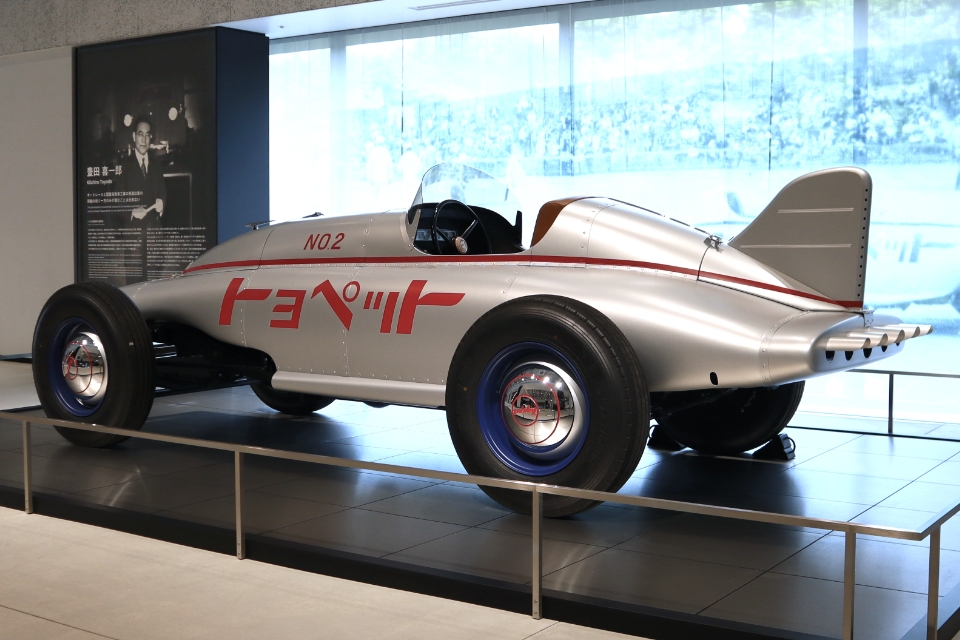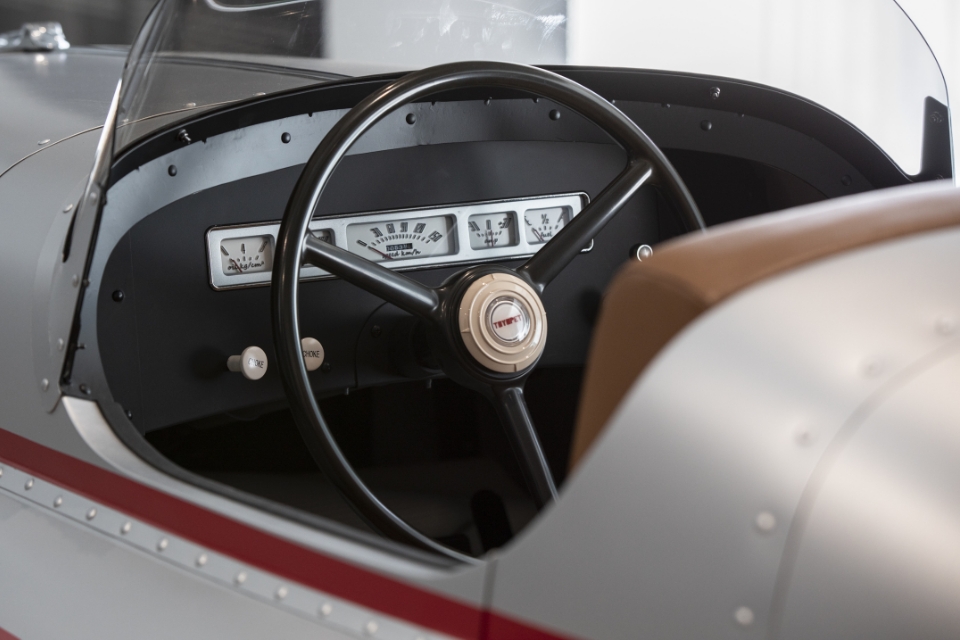
TOYOTA TOYOPET RACER
Replica
Toyopet Racer was developed in 1951, just six years after World War II ended. During this time, Japan was still under the political and economic control of the Allied Forces' General Headquarters (GHQ), and car production required GHQ approval. In 1949, Japan resumed passenger car production after the war, but GHQ's fiscal and monetary tightening policies caused a major recession, leading to a serious crisis for car manufacturers. Toyota's founder, Kiichiro Toyoda, firmly believed that developing a small, powerful, and fuel-efficient engine suited to Japan's road and traffic conditions was essential for the survival of the Japanese automobile industry. He also aimed to introduce a superior compact car to the global market. Toyota also felt the need to enter motor racing early on to help make technical improvement. The goal was not to win races, but to refine a small, powerful engine, setting the stage for motor racing.
Toyopet Racer was developed based on the TOYOPET SD, a passenger car that had been introduced in 1949. It was a small, five-seater car primarily used as a taxi. By moving the engine and driver's seat to the rear, the car achieved a 50:50 weight distribution between the front and rear, and it had a top speed of 150-160 km/h. TOYOPET RACER was a product of an in-house project to reinforce the importance of craftsmanship in manufacturing. The body was created by hammering a steel plate.
| Vehicle Data |
|
|---|---|
| Exhibition Period | 07 Oct 2022~ |





